.png)
.png)
This month, we're focusing on the importance of language in art. Our Urban & Contemporary Art Specialist, Elise, offers insight into noteworthy graffiti and mural artists, along with recent auction results.
Writing on walls has been a method humans have used to communicate since the stone ages and throughout ancient history. Cave drawings have been discovered, tracing back hundreds of thousands of years, formed by the earliest of ‘modern humanity’. Although only in recent decades has ‘Graffiti’ been analysed as an art form, the practice of ‘Graffiti Writing’ can be linked back to vast historical developments within humanity. As well as the external use of writing within art, text has also become a popular medium frequently seen within contemporary artwork.
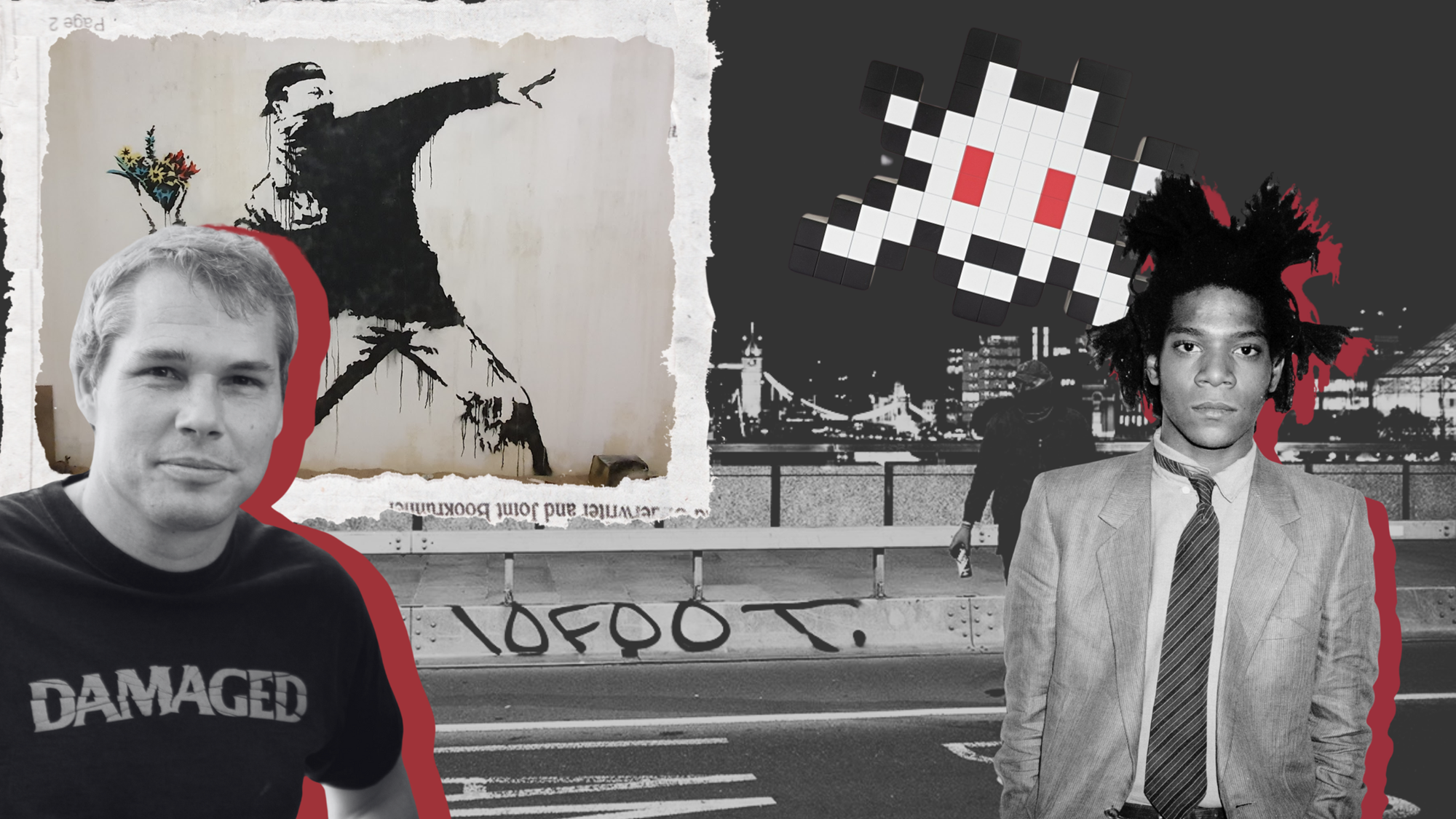
Graffiti writing first emerged on the streets of New York City in the late 1960s, frequently used as a method of gaining exposure. Jean-Michel Basquiat, who is now seen as one of the leading figures within late twentieth century art, began as a graffiti artist within an artistic duo known as ‘SAMO’. His artistic career began as the duo anonymously tagged the streets of New York, leading to questions of their identity and discussion into the meaning behind the phrase. Although this element of Basquiat’s work isn’t highly recognised within his practice today, we can still see it as a defining factor of his creative beginnings and exposure into the art world.
Within Contemporary Art today, Urban Art has risen in popularity with highly recognised street artists such as Banksy, Shepard Fairey and Invader presenting the shift from the walls to the commercial art world. Within Urban Art, Graffiti Writing is still seen as a method of creating works externally, often used for exposure or to create a statement. 10Foot can be a prime example of this, using his recognisable tag to cover walls all over the world. Predominantly he is a Graffiti Writer, but he has been seen to produce commercial works seen at both auction and through exhibitions, such as his recent ‘Long Dark Tunnel’ exhibition in Piccadilly. As an example, the following work ‘Dope 10Foot’ achieved £900 including fees against an estimate of £400-£600 in one of our recent sales.
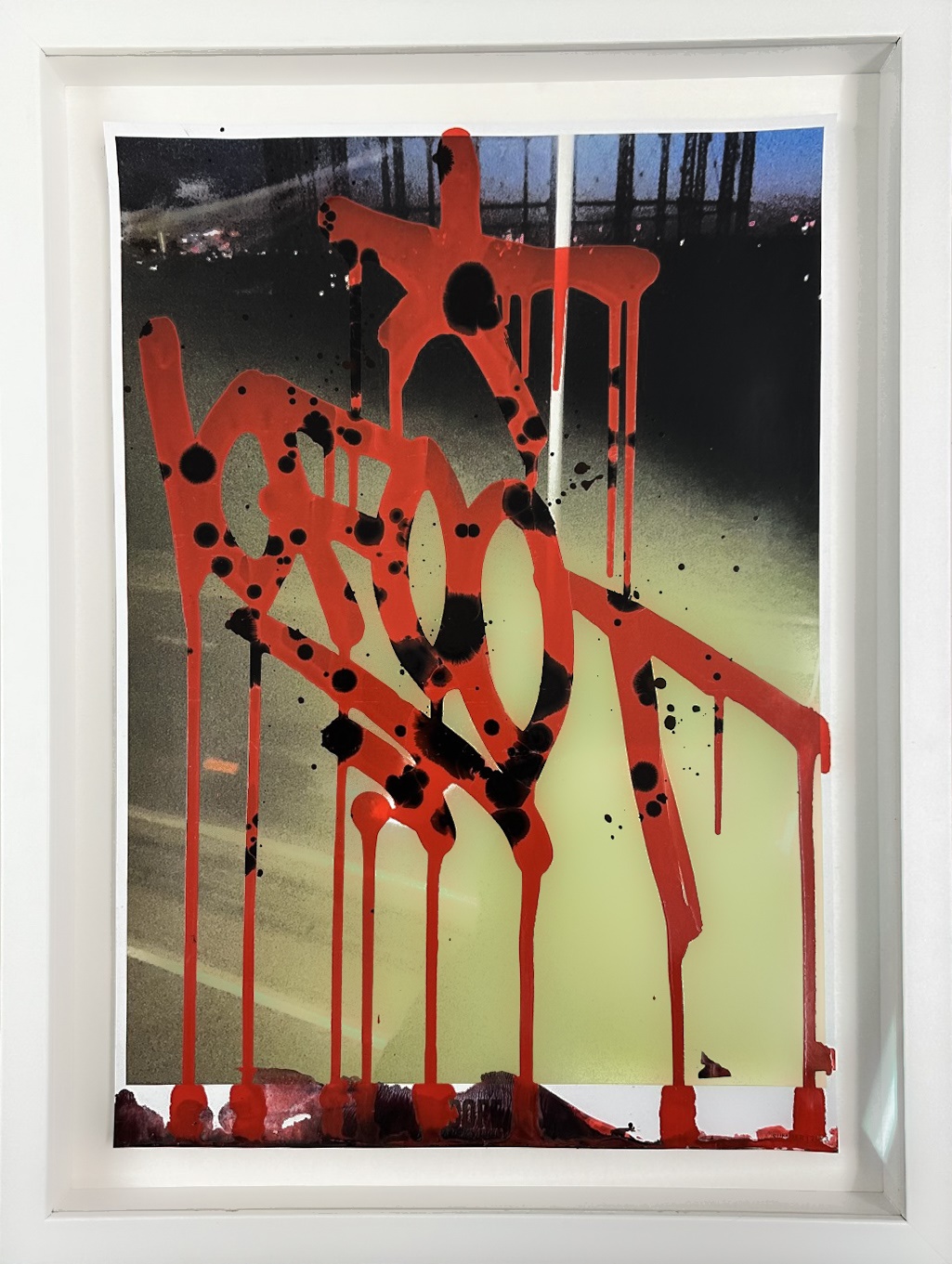
Similarly, Retna is an American street artist known for the murals he creates, with a focus on lettering and symbols. As quoted by Retna, “It is important to have art in the streets as a cultural fabric that is woven into the city for the upliftment of civic pride”. With the combination of text, symbols and colour, there is a great complexity within his practice which allows him to convert linguistics into a visual form. Retna is an artist who we offer within our auctions, with his works often achieving great results. Please see a link below to see previous Retna works;
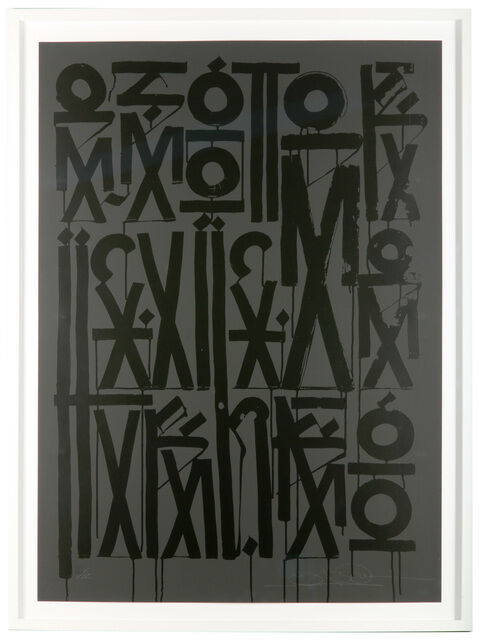
.png)
Within contemporary Art today, text has become a popular method of incorporating language into creative practice. It is often used to identify themes or create social commentary, but can also be seen as an explicit method of connecting to an audience.
Ed Ruscha, Barbara Kruger and Jenny Holzer are three artists who gained popularity within the twentieth century art scene, with a similarity in their practices through the incorporation of text through various mediums. Ed Ruscha uses a printmaking technique to layer printed text onto imagery and photography. His work is often inspired by commercial imagery such as newspaper/magazines and advertising imagery, which is highlighted in the way he incorporates bold lettering and consumerist references. Similarly, Barbara Kruger combines bold statements with monochrome imagery often referencing the media and making commentary on popular culture. Her messages are direct, with the incorporation of text allowing her audience to connect and question her work. With a focus on language within her practice, Jenny Holzer creates installation works through a range of mediums. Although her work is not created directly on the walls, there is an alignment with Graffiti through the exposure of the work through choice of environment. Within all three artists’ approaches, we understand how language can be used to present politics within creative practice.
Within our auctions and as a leading figure within Contemporary Art today, David Shrigley is potentially one of the most popular text based artists. His works are witty and entertaining, with short pieces of text used to accompany fun and colourful imagery. The incorporation of text allows his audience to connect to the works through humour. To browse recent David Shrigley results via our website, please follow the link below;
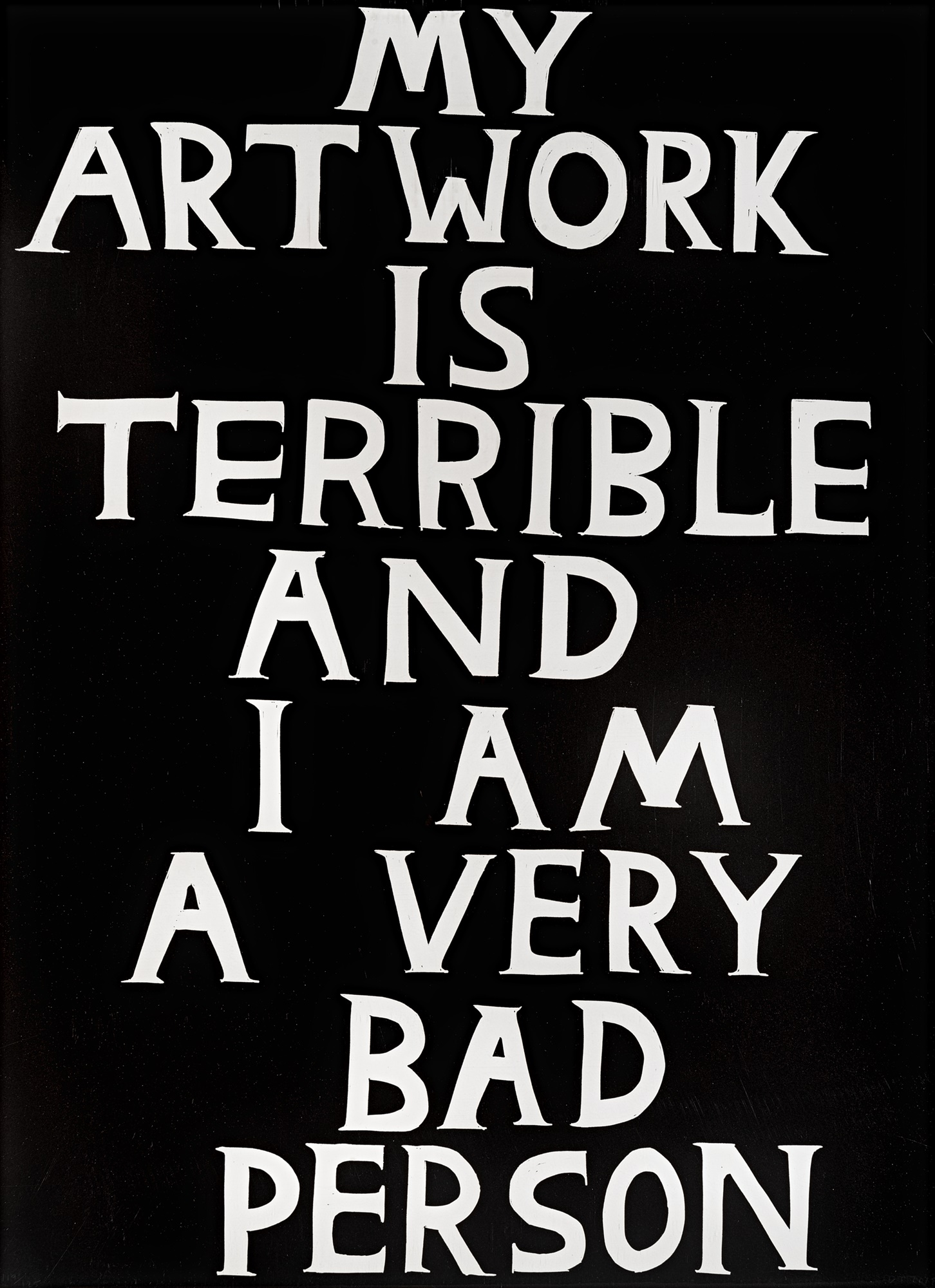
Similarly, British artist Harland Miller combines text and imagery to narrate his paintings. He is most recognised for his reconfiguration of classic Penguin book covers, using his creativity to re-imagine the iconic imagery. His works are eye-catching and recogniseable, leading to his well defined practice. Similarly to Shrigley, Harland Miller uses language to create a commentary within his works, often using humour to cause a reaction. Please see the fantastic range of Harland Miller works we have offered in recent auctions;
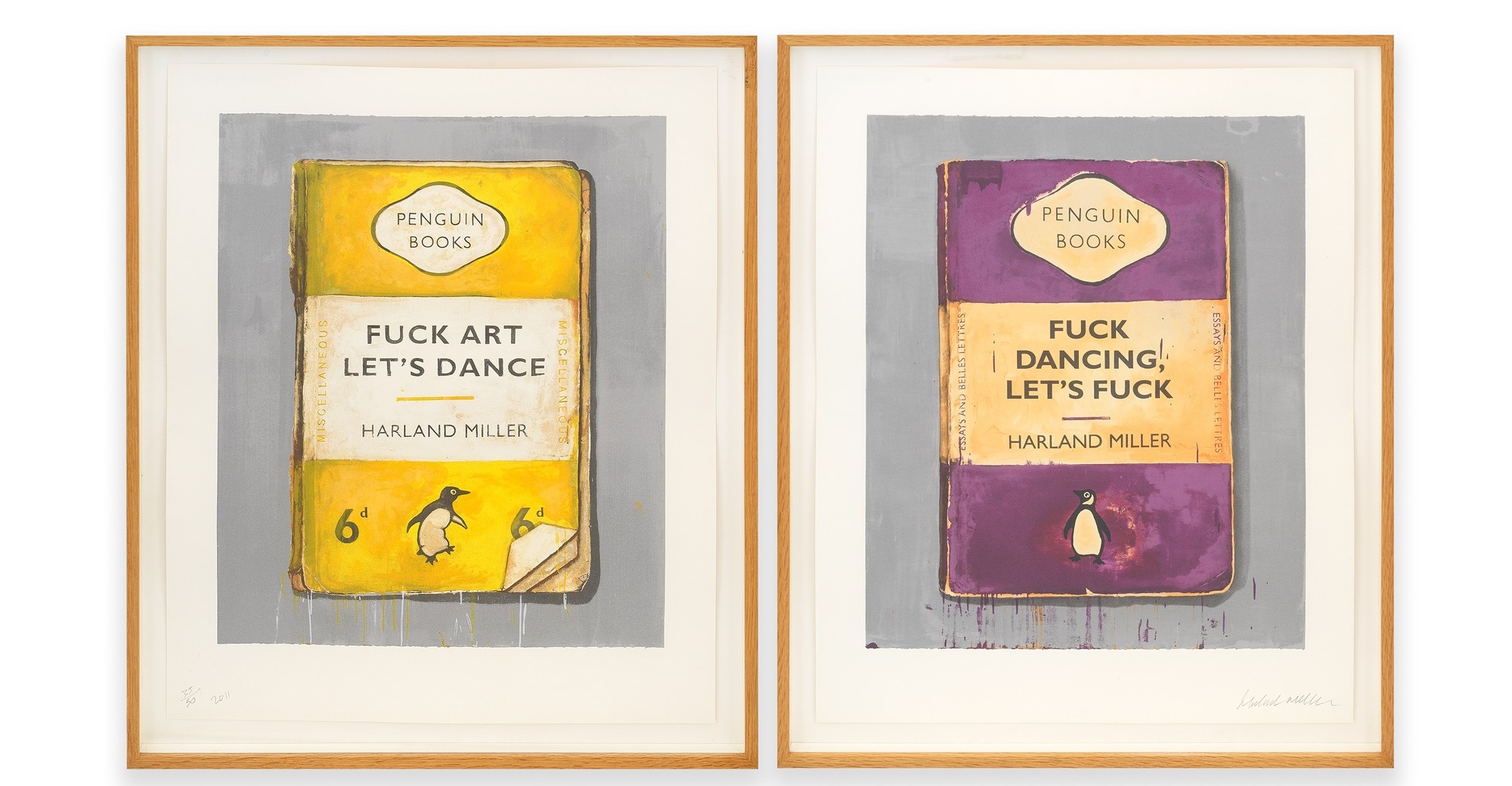
If you are looking to buy or sell works by any of these artists, please contact info@tateward.com